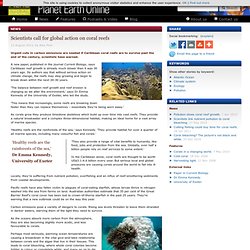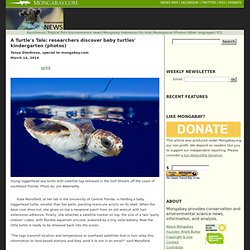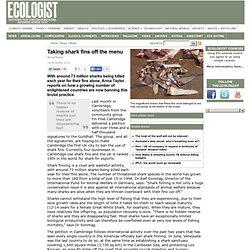

Japan Vows to Resume Whaling for "Science" Arabian Sea Humpback Whales Isolated for 70,000 Years. The small non-migratory humpback whale population is genetically distinct, scientists findResearchers recommend “Critically Endangered” status for isolated whales NEW YORK (December 3, 2014) — Scientists from WCS (Wildlife Conservation Society), the American Museum of Natural History (AMNH), the Environment Society of Oman, and other organizations have made a fascinating discovery in the northern Indian Ocean: humpback whales inhabiting the Arabian Sea are the most genetically distinct humpback whales in the world and may be the most isolated whale population on earth.

The results suggest they have remained separate from other humpback whale populations for perhaps 70,000 years, extremely unusual in a species famed for long distance migrations. The study appears in the online journal PLOS ONE. The authors include: Cristina Pomilla of the the Sackler Institute for Comparative Genomics at the American Museum of Natural History; Ana R.
To access the paper, click here >> Scientists call for global action on coral reefs. Scientists call for global action on coral reefs 13 August 2013, by Alex Peel Urgent cuts in carbon emissions are needed if Caribbean coral reefs are to survive past the end of the century, scientists have warned.

A new paper, published in the journal Current Biology, says Caribbean reef growth is already much slower than it was 30 years ago. Its authors say that without serious action on climate change, the reefs may stop growing and begin to break down within the next 20-30 years. 'The balance between reef growth and reef erosion is changing as we alter the environment,' says Dr Emma Kennedy of the University of Exeter, who led the study. Humpback Whale Crittercam Video Reveals Bottom-Feeding Activity. Humpback whales are known for their bubble nets.
A Turtle's Tale: researchers discover baby turtles' kindergarten (photos) Young loggerhead sea turtle with satellite tag released in the Gulf Stream off the coast of southeast Florida.

Photo by: Jim Abernethy. Kate Mansfield, at her lab in the University of Central Florida, is holding a baby loggerhead turtle, smaller than her palm, painting manicure acrylic on its shell. When the base coat dries out, she glues on top a neoprene patch from an old wetsuit with hair extensions adhesive. Finally, she attaches a satellite tracker on top, the size of a two "party cheese" cubes, with flexible aquarium silicone, powered by a tiny solar battery. Dolphins, bats and the evolution of echolocation. A dolphin swimming through the world’s oceans after fish, and a bat flying through the air with its membranous wings to catch insects or eat fruit: at first glance, it looks like no two creatures could be more different.

But it turns out they share a superpower - they hunt prey by emitting high-pitched sounds and listening for a returning echo. A recent study published in the journal Nature Letters has shown that the regions of the genome responsible for this ability are strikingly similar between these very different mammals. Taking shark fins off the menu. There is no hidden reserve of sharks and they are disappearing fast Last month in Cambridge, volunteers from the community group Fin Free Cambridge delivered a petition with over three and a half thousand signatures to the Guildhall.

The group, and all the signatories, are hoping to make Cambridge the first UK city to ban the use of shark fins. Currently four businesses in Cambridge use shark fins and the UK is ranked 19th in the world for shark fin exports. Shark finning is a cruel and wasteful activity, with around 73 million sharks being killed each year for their fins alone. Sea Creature Survival Skills Photos. Biodiversity Typically Rises with Higher Temperatures, but Not this Time. Looking back through the eons of the Earth's history by studying fossil and geological records, a trend appears.

Biodiversity, or the abundance of life, generally increases as the planet warms. More heat creates more energy for plants and animals to thrive. Of course, not all species flourish in a warmer environment. Many will go extinct as others grow more numerous, but the overall number normally increases. Unfortunately, we will not likely see any rebound in biodiversity during our currently changing climate.
The Leeds researchers set out to refine a previous study of biodiversity over the same time interval. According to lead author, Dr. "Science progresses by constantly re-examining conclusions in the light of better data," said Professor Tim Benton of the Faculty of Biological Sciences at the University of Leeds. Dr. Changes in water chemistry leave lake critters defenseless. Imagine that the players on your favourite football team were smaller than their opponents, and had to play without helmets or pads.

Left defenseless, they would become easy prey for other teams. Similarly, changes in Canadian lake water chemistry have left small water organisms known as plankton vulnerable to their predators, which may pose a serious environmental threat, according to a new study. Why do plankton matter? York biology Professor Norman Yan, the study's senior author, says these tiny creatures are critical to our survival.
"Without plankton, humans would be quite hungry and perhaps even dead. Yan together with the study's lead author Howard Riessen, a professor of biology at SUNY College at Buffalo, studied the effect of changes in water chemistry on plankton prey defenses. Ocean Horror Show: Dead Sea Birds With Bellies Full of Plastic Garbage. Sustainability, mass consumption, and what he calls "our culture of waste" have long been the backbone of Seattle-based photographer Chris Jordan's work.

For the past four years his creative energy has been focused on a remote group of islands near Hawaii, 2,000 miles from the nearest continent. Yet there, on Midway Atoll, he has discovered a nightmare scenario that powerfully illustrates just how ruinous man's impact on nature can be: hundreds, thousands of dead albatross chicks choked to death on man's detritus, mostly shiny bits of plastic picked up from the nearby Pacific Ocean by their parents, and fed to them mistakenly as food. Fish Mimics Octopus That Mimics Fish. The mimic octopus can take on the forms of a lionfish, a jellyfish, a shrimp, a crab, and more than ten other animals. Scientists Report Surprising Findings About the Way Whales and Bats Hunt. What do whales and bats have in common?

It sounds like the start of a corny joke, but the answer is more than you think. According to Danish researchers, the two animal species have an eerily similar hunting technique. Although it’s widely known that both bats and toothed whales — as well as dolphins and porpoises — emit a type of sonar called echolocation to detect prey, the Danish study found that both species increase their rates of calls per second to about 500 clicks. Groups File Suit to Protect Hawai’i’s Reef Ecosystems. Earthjustice Citizens and conservation groups took legal action yesterday to require the Hawai’i Department of Land and Natural Resources (DLNR) to protect Hawai’i’s reefs and coastal areas from unlimited collection of fish and other wildlife for the aquarium trade.

Octopus Camouflage Hints To Higher Intellect Than Expected. Penguins face a slippery future. Adelie penguins hunting for food. Photo by: J. Weller. Click to enlarge. Pablo Garcia Borboroglu will be speaking at the Wildlife Conservation Network Expo in San Francisco on October 13th, 2012. Penguins have spent years fooling us. "Penguins are telling us a story that we need to hear: 11 of the 18 species of penguins are listed as Vulnerable or Endangered by IUCN," Pablo Garcia Borboroglu, the President of the Global Penguin Society, told mongabay.com in a recent interview. These factors make penguins not only extremely sensitive to large-scale environmental changes, but also key species for monitoring the overall health of oceans.
"Large-scale industrial fisheries starting in the mid 20th Century removed enormous numbers of fish from the Southern Oceans. Sea snails' shells dissolving in Earth's increasingly acidic oceans, study says. The pteropod (marine snail) inhabit the top 200 m of oceanic waters. Their shells are made of aragonite that can dissolve rapidly.
This is the first case of ocean acidification affecting living organisms, scientists sayThey say increasing carbon dioxide in the atmosphere is making oceans more acidicThat in turn is causing the shells of tiny sea snails to dissolve at shallower depthsThe snails, known as sea butterflies, are a key food source for fish and birds. Leatherback sea turtles suffer 78 percent decline at critical nesting sites in Pacific. Leatherback sea turtle laying eggs on the coast of Suriname. Weird and mysterious: scientists find new shark species. False Killer Whales to Receive Protection. Conservation Groups, Fisheries Service Agree on Deadline for 'Take-reduction' Plan. The federal agency charged with protecting marine mammals settled a court case yesterday by pledging to finalize and implement protections for false killer whales by Nov. 30, 2012.
Branch Will Begin Warfare Training in Waters Teeming with Whales and Dolphins. The U.S. Navy has plans to employ sonar and explosives as part of its training program in the waters off Southern California and Hawaii—activities that will deafen, kill, or injure thousands of marine mammals. In the five-year time period between 2014 and 2019, the Navy now expects 33 million incidents of harm to marine mammals, ranging from significant behavioral change to severe injury and death. According to the Natural Resources Defense Council (NRDC), the training will result in temporary hearing loss for five million marine mammals that inhabit or migrate through the training area, which include endangered and depleted humpback whales, blue whales, fin whales, sperm whales, Hawaiian monk seals, southern sea otter, and many more.
In addition, more than 15,000 marine mammals will suffer permanent hearing loss, 9,000 will endure lung injuries, and more than 1,800 will die.